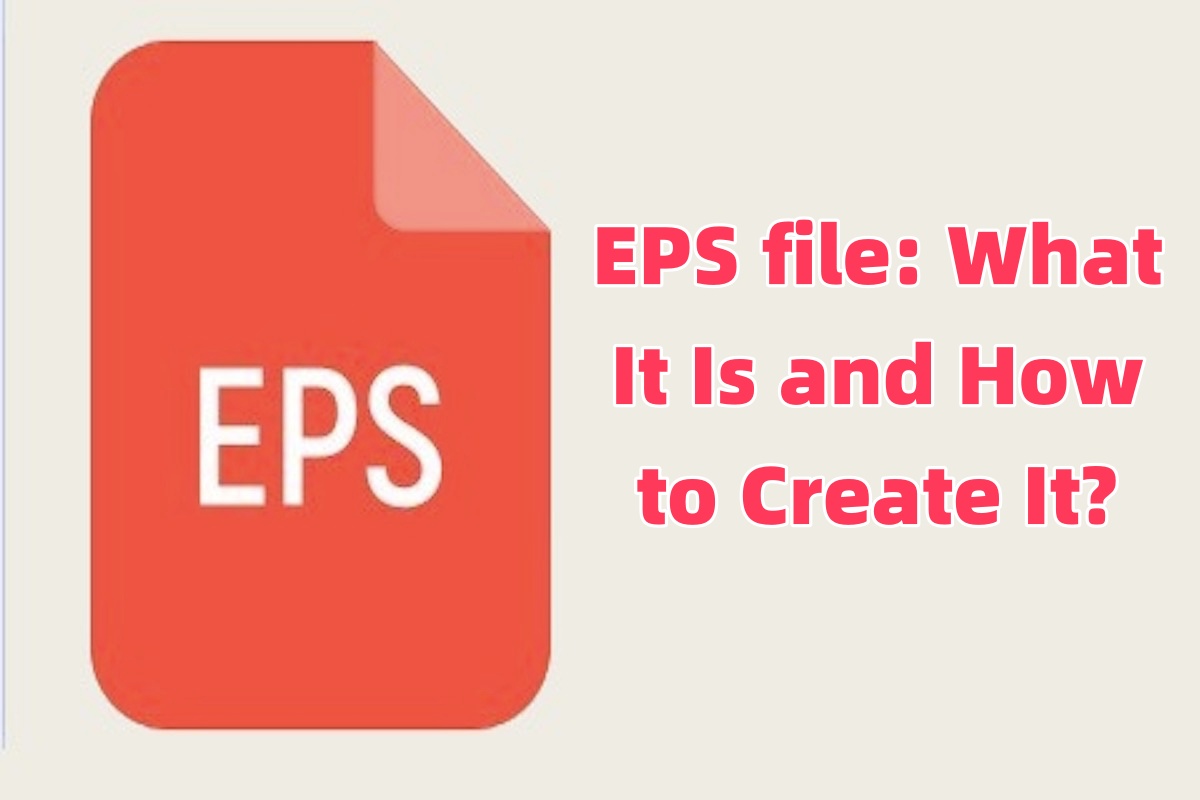EPS stands for Encapsulated PostScript, a file format that can contain both text and graphics, making it ideal for transferring images across different operating systems and applications.
This article will walk you through everything you need to know about EPS files — what they are, how to open and edit them, and how to create one, helping you easily master this essential graphics format.
What is an EPS file
An EPS (Encapsulated PostScript) file is a graphic file format developed by Adobe. It contains a PostScript program, a preview image, and vector-based graphics, allowing it to be scaled infinitely without any loss of quality.
Moreover, EPS files boast strong compatibility, widely supported by various design software and printing devices, enabling seamless transfer across different operating systems and applications.
EPS files are commonly used in the following scenarios:
- Logos and icons: Vector graphics are resolution-independent, making them ideal for printing at various sizes.
- Professional printing workflows: Printers and publishers use EPS files to ensure images remain sharp and colors are accurate.
- Illustrations and design elements: Designers often save Adobe Illustrator files as EPS to share with clients or import them into other programs.
Click the icon below to share the EPS file with others!
Pros and Cons of EPS files
Although EPS files are widely used across many industries, they also have some limitations. Here are the main advantages and disadvantages of EPS files:
Advantages of EPS Files
- Lossless scaling. EPS is a vector-based format, which means the image can be enlarged or reduced without distortion, making it especially suitable for printing large images such as banners or billboards.
- High-quality compression. EPS uses lossless compression, so the image quality does not degrade with changes in file size.
- Strong professional printing compatibility. Almost all professional printing devices and graphic software support EPS files, making it one of the standard formats in the publishing and printing industry.
- Cross-platform support. EPS files can be transferred and opened across different operating systems like Windows and macOS, offering excellent compatibility.
Disadvantages of EPS files
- Not directly editable. Once saved as an EPS file, it cannot be edited within the file itself. If modifications are needed, you must return to the source file to redesign.
- Dependent on professional software. EPS files usually require software like Adobe Illustrator, CorelDRAW, or other vector graphic editors to open and edit; ordinary image viewers cannot display them properly.
- Inaccurate preview images. The preview images embedded in EPS files may not accurately reflect the final output, especially in applications that do not fully support EPS.
How to create and edit an EPS file
The easiest way to create an EPS file is by using vector graphic editors such as Adobe Illustrator, CorelDRAW, or Inkscape. You can design your artwork or illustrations in these programs, and when finished, choose “Save As” or “Export,” then select the EPS format.
During the creation process, you can customize export settings according to your needs, for example, whether to embed fonts, include a preview image, or adjust the color mode (RGB or CMYK), to ensure compatibility and proper display across different devices and software.
If you need to edit an EPS file, you can also open it with these vector graphic programs to modify paths, colors, text, and other elements. You can easily resize and refine the artwork without losing quality because EPS is a vector-based format.
When editing text within an EPS file, make sure the fonts used are installed on your system; otherwise, you may encounter font substitutions or display issues.
If you found this article helpful, share it with others!
